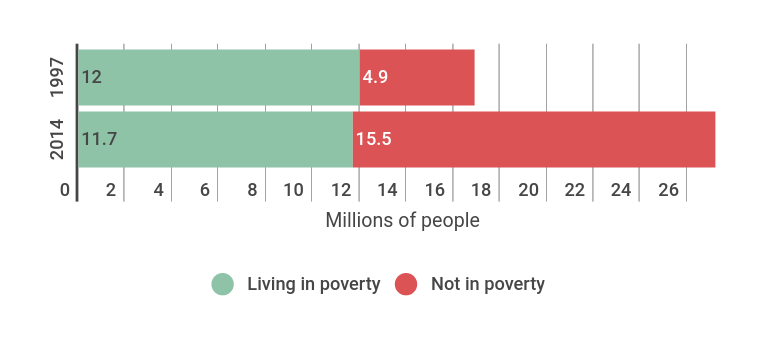Blog
Mini-documentary: Mozambique - Scaling up research and capacity
In the 1980s Mozambique was one of the poorest countries in the world. Since then, the country has recovered from civil war to grow by an average of 7% each year. According to the latest national poverty assessment, carried out as part of the ‘Inclusive growth in Mozambique’ project, the number of people living below the poverty line, without access to basic human needs such as food and shelter, has fallen from two-thirds of the population in 1996 to just under half by 2014.
The overall figures hide a deep divide in terms of poverty
This impressive fall in poverty hides a deep divide. In urban areas the average poverty rate is now close to one-third, but poverty continues to affect more than half of the population in rural areas where more than 70% of Mozambicans live. Moreover, while the national poverty rate has fallen, the population of the country has grown. As such the actual number of people living in poverty in Mozambique remains about the same (see figure below).

Toward inclusive growth in Mozambique
To address these challenges, as well as others the country faces, UNU-WIDER, the University of Copenhagen, the Mozambican Ministry of Economics and Finance, and the University Eduardo Mondlane are working on scaling up economics research to help guide policy and develop the capacity of economists and policy makers in the country. Ongoing project activities include surveys on the manufacturing sector and job markets, and research on inequality in the country. Our new mini-documentary highlights some of the key work being done as part of the project.
The project engages young aspiring Mozambican researchers to play a key role in gathering and analyzing previously unavailable data. In this way the project aims to create a lasting legacy in Mozambique that involves not only providing better research today, but also lasting improvements to policies and policy-making. Learn more on the project website.
The views expressed in this piece are those of the author(s), and do not necessarily reflect the views of the Institute or the United Nations University, nor the programme/project donors.
 Join the network
Join the network


